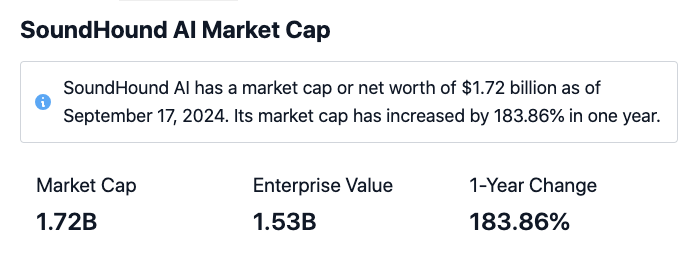20 Excellent Suggestions For Choosing Ai For Trading
20 Excellent Suggestions For Choosing Ai For Trading
Blog Article
Top 10 Tips For Backtesting For Stock Trading Using Ai From Penny Stocks To copyright
Backtesting AI strategies for stock trading is essential particularly when it comes to the highly volatile penny and copyright markets. Here are 10 key points to make the most of backtesting.
1. Backtesting is a reason to use it?
TIP: Understand that backtesting helps evaluate the performance of a strategy on historical data in order to enhance decision-making.
This allows you to test the effectiveness of your strategy prior to putting real money in risk on live markets.
2. Use historical data that are of good quality
Tip: Make sure the backtesting data includes complete and accurate historical volume, prices, as well as other metrics.
Include information about corporate actions, splits and delistings.
Use market-related data such as forks and half-offs.
Why: Data of high quality can give you realistic results
3. Simulate Realistic Trading Conditions
Tips: When testing back take into account slippage, transaction costs as well as spreads between bids versus asks.
What's the problem? Not paying attention to the components below could result in an overly optimistic performance result.
4. Test Market Conditions in Multiple Ways
Tips: Test your strategy with different market scenarios including bull, sideways, as well as bear trends.
The reason: Different circumstances can impact the effectiveness of strategies.
5. Concentrate on the important Metrics
Tips: Examine metrics such as:
Win Rate : Percentage of profitable trades.
Maximum Drawdown: Largest portfolio loss during backtesting.
Sharpe Ratio: Risk-adjusted return.
The reason: These indicators are used to determine the strategy's risks and rewards.
6. Avoid Overfitting
Tips. Make sure you're not optimising your strategy to fit previous data.
Tests of data that are not used in optimization (data which were not part of the sample). in the sample).
Utilizing simple, reliable rules rather than complex models.
What is the reason? Overfitting could result in poor performance in real-world situations.
7. Include transaction latency
Tip: Simulate the time delay between signal generation and trade execution.
For copyright: Account to handle network congestion and exchange latency.
Why: The latency of entry and exit points can be a major issue especially in markets that move quickly.
8. Test walk-forward walking
Tip: Divide historical data into several time periods:
Training Period: Optimise the method.
Testing Period: Evaluate performance.
This technique allows you to test the advisability of your plan.
9. Combine forward testing with backtesting
Tips: Try strategies that have been tested in a demo environment or in a simulation of a real-life scenario.
Why: This is to confirm that the strategy is working as anticipated in current market conditions.
10. Document and Reiterate
Keep detailed records for the parameters used for backtesting, assumptions, and results.
Why Documentation is a great way to make strategies better as time passes, and to identify patterns that work.
Bonus: Backtesting Tools Are Efficient
For robust and automated backtesting make use of platforms like QuantConnect Backtrader Metatrader.
The reason: Modern tools simplify processes and eliminate human errors.
These tips will help you to make sure you are ensuring that your AI trading plan is optimized and verified for penny stocks as well as copyright markets. Follow the most popular best ai copyright prediction blog for site recommendations including ai stock trading bot free, trading chart ai, ai stocks to buy, ai stock analysis, ai stocks, best ai copyright prediction, ai for stock market, ai trading, best copyright prediction site, trading chart ai and more. 
Top 10 Strategies For Ai Stock Pickers To Increase The Quality Of Their Data
Data quality is crucial for AI-driven investment, forecasts and stock selections. High-quality data ensures that AI models make accurate and reliable choices. Here are ten tips to ensure the accuracy of the data used in AI stock selectors:
1. Make sure that data is well-structured and clean
Tips: Make sure your data is clean, free from errors, and arranged in a uniform format. It is also important to eliminate duplicates, dealing with missing values and ensuring data coherence.
Why is this: Clean and well-structured data enables AI models to process data more efficiently, resulting in more accurate predictions and less errors in making decisions.
2. Timeliness is key.
Utilize real-time market data to create accurate forecasts. This includes stock prices trade volumes, earnings reports.
The reason: Timely data makes sure that AI models reflect current market conditions, which is vital for making precise stock picks, especially in markets that are constantly changing, such as copyright or penny stocks.
3. Source data from reliable suppliers
Tips: Make sure to choose data providers that are trustworthy and have been thoroughly scrutinized. This includes financial statements, economic reports as well as price feeds.
The reason: By using reliable sources, you reduce the risk of data inconsistencies or mistakes that could compromise AI model performance. This could lead to inaccurate forecasts.
4. Integrate multiple sources of data
TIP: Mixing different sources of data like financial statements and news sentiments media data, and macroeconomic indicators.
The reason: A multi-source strategy gives a complete view of the stock market and allows AI to make informed decisions by analyzing various aspects of its behavior.
5. Focus on historical data for backtesting
Tips: Collect high-quality historic data for backtesting AI models to test their performance under various market conditions.
Why: Historical Data helps in the refinement of AI models. You can test trading strategies in a simulation to evaluate the potential risk and return and make sure that you have AI predictions are reliable.
6. Validate data continuously
Tips: Ensure that you regularly audit data quality, examining for inconsistent data. Update information that is outdated and ensure the data is accurate.
The reason: Continuously validating data ensures its accuracy and minimizes the risk of making incorrect predictions based on incorrect or outdated data.
7. Ensure Proper Data Granularity
TIP: Select the data level that best fits your plan. For instance, you could utilize minute-by-minute data for high-frequency trading or daily data for long-term investment.
Why: The correct granularity of data is essential for your model to reach the goals you set for it. Strategies for trading in the short-term, for example, benefit from high-frequency data and long-term investments require greater detail and a lower frequency collection of information.
8. Integrate alternative data sources
Think about using other data sources like satellite imagery, social media sentiment or web scraping for tracking market trends and news.
What's the reason? Alternative data can offer unique insights into market behavior, giving your AI system an advantage by identifying patterns that traditional sources of data could miss.
9. Use Quality-Control Techniques for Data Preprocessing
Tip. Use preprocessing techniques such as feature scaling normalization of data or outlier detection to enhance the quality of your raw data before you input it into AI algorithms.
The reason is that preprocessing the data properly assures that AI models are able to discern it with accuracy. This can reduce the chance of the chance of errors in prediction, and increase overall model performance.
10. Monitor Data Drift and Adjust Models
Tips: Make adjustments to your AI models based on the shifts in the characteristics of data over time.
Why: Data drift could adversely affect the accuracy of an algorithm. By recognizing, and adapting, to changes in patterns of data, you will make sure that your AI remains effective over the long haul particularly in dynamic markets like copyright or penny stocks.
Bonus: Keep an Improvement Feedback Loop for Data Improvement
TIP: Set up a feedback loop where AI models constantly learn from new data and perform results, allowing them to improve the methods of data collection and processing.
Why: By using feedback loops, you can improve data quality and adapt AI models to market conditions.
To allow AI stock-pickers to maximize their potential, it is essential to concentrate on data quality. AI models need accurate, current and quality data to be able make reliable predictions. This will lead to more informed investment choices. By following these tips to ensure that your AI system has the highest quality data foundation for stock picking as well as investment strategies. Have a look at the top ai stock prediction recommendations for site tips including ai copyright prediction, stock ai, ai stock trading bot free, ai stock trading, ai penny stocks, ai stocks to buy, ai stock prediction, ai stocks to buy, trading ai, ai trade and more.